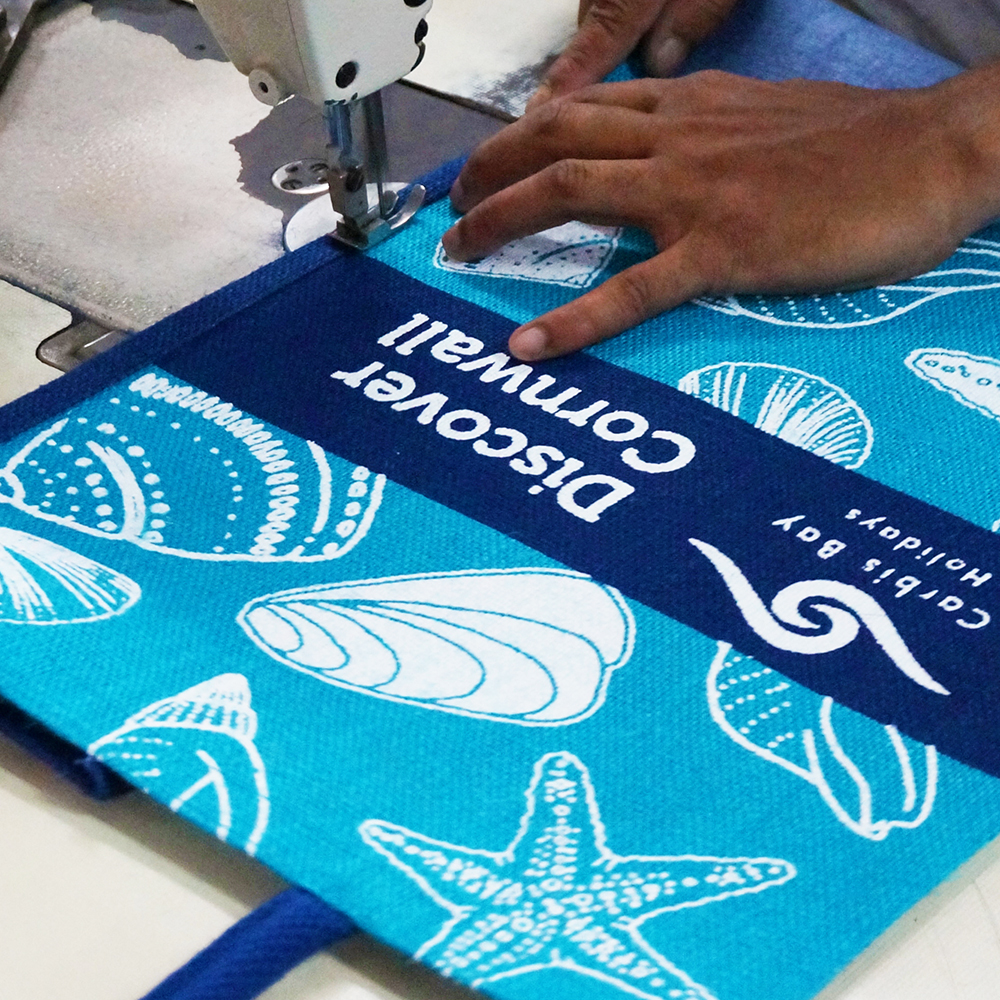
Stitching Jute Panels
The assembly stage of jute bag manufacturing is a critical step where printed jute bag panels are skillfully stitched together to create the final product
After the printing process, where designs or branding elements are applied to the jute fabric panels, these panels are then carefully aligned and joined during the stitching phase. Skilled workers play a crucial role in ensuring precision and quality in this process.
"Quality control is a significant aspect of the stitching stage"
The stitching process involves using sewing machines or, in some cases, hand stitching techniques, depending on the requirements of the project. The goal is to securely connect the printed jute panels while maintaining the integrity of the design and ensuring the bag’s overall strength. This stage demands attention to detail and craftsmanship to guarantee that each jute bag meets the highest standards of quality and durability.
The seams are strategically placed to enhance the bag’s strength and prevent fraying over time. In addition to providing structural integrity, the stitching also contributes to the overall aesthetics of the jute bag, influencing its final look and feel.
Quality control is a significant aspect of the stitching stage, with inspectors often checking the seams, alignment, and overall construction of each bag to identify and rectify any defects. Properly stitched jute bags not only ensure the longevity of the product but also contribute to the satisfaction of the end-users. As a result, the stitching stage is a crucial component in the jute bag manufacturing process, marrying functionality with visual appeal to produce a finished product that meets both practical and aesthetic standards.
See the jute bag manufacturing process as a whole, or use the button below to read more about the next stage of the process.



